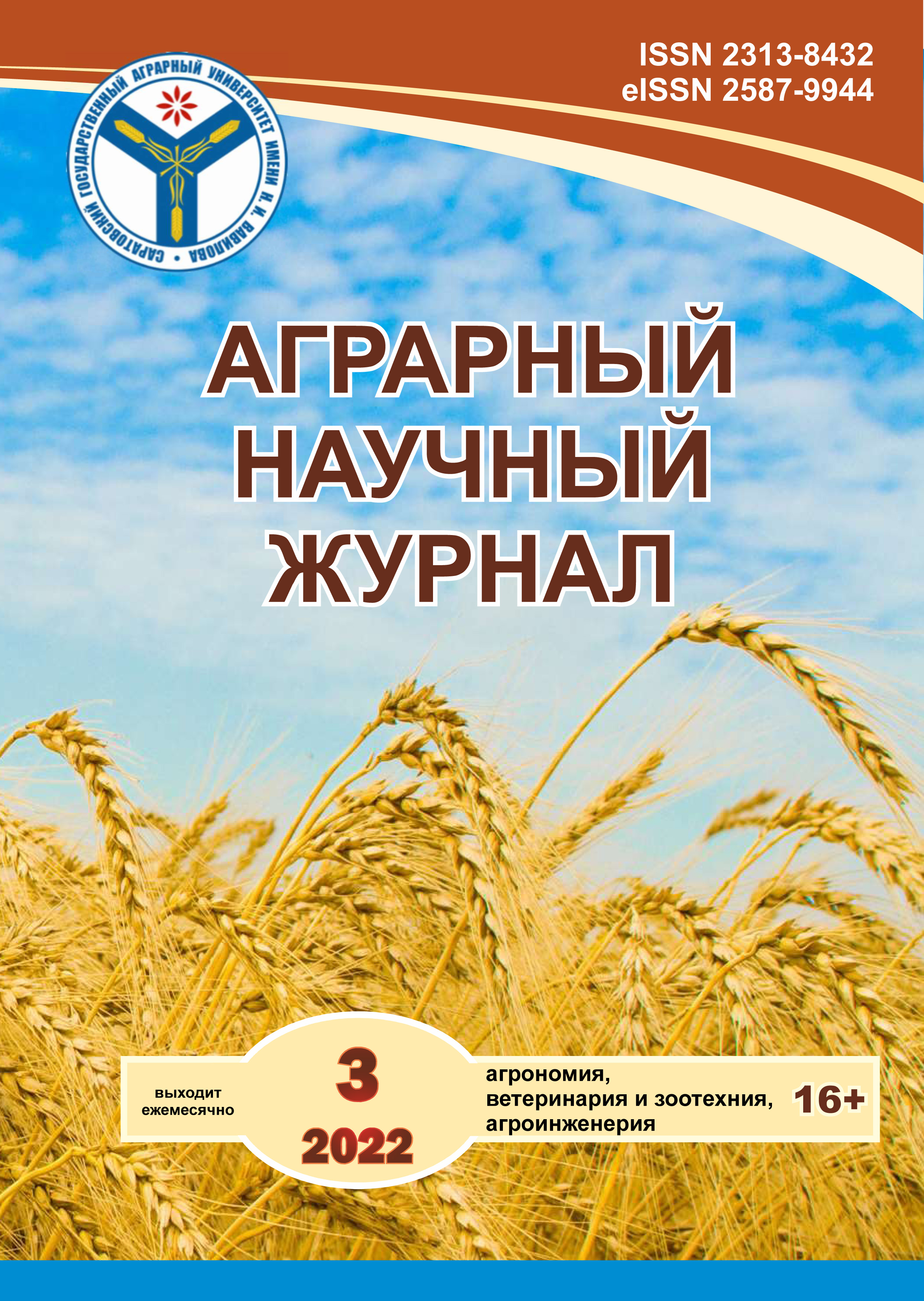Features of the formation of grain yield of triticale in the Middle Zavolzhye
DOI:
https://doi.org/10.28983/asj.y2022i3pp15-18Keywords:
winter triticale, variety, seeding rates, yieldAbstract
Winter triticale is the most promising grain crop, over the past seven years four varieties of local selection have been zoned in the region. However, the technology of their cultivation requires clarification. The purpose of the work is to identify the features of grain yield formation and seeding rates of varieties of various types of winter triticale in the Middle Volga region. In 2018-2021, the formation of yields of triticale varieties (Crumbs and Capella) on six variants of seed sowing rates was considered on ordinary chernozem. When using the growth-stimulating drug Baritone at seeding rates of 1.0; 2.0; 3.0; 4.0 and 5.0 million/ha it was found that the temperature and relative humidity of the air had the greatest influence on the elements of the crop structure. The main element of the crop structure - the density of the stem was most dependent on the relative humidity of the air during the spring-summer vegetation (r=–0.98*…–0.99*). When cultivating for grain, a significant increase in yield had Crumb variety, compared with the Capella by 0.31-0.44 t/ha (14.0-17.6%). Its highest values were at seeding rates of 3.0-5.0 million/ha - 2.66-2.69 (Capella), - 3.05-3.10 t/ha. Of the abiotic factors, the maximum effect on grain yield was exerted by the relative humidity of the air during the spring-summer growing season (r= –0.98*…–0.99**). The highest net income indicates the expediency of cultivating triticale in the conditions of the Volga region to etch seeds with Bariton preparation and sow them for fodder at a rate of 3.0 million/ ha.
Downloads
References
Горянина Т. А. Возделывание тритикале в условиях Самарской области: науч.- практ. рек.; ФГБНУ «Самарский НИИСХ». Самара, 2016. 24 с.
Горянин О. И., Горянина Т. А. Эффективность возделывания сельскохозяйственных культур в степном Заволжье // Аграрный научный журнал. 2013. № 11. С.19–22.
Грабовец А. И., Крохмаль А. В. Селекция тритикале на зелёный корм на Дону // Достижения науки и техники АПК. 2018. № 12. С. 40–42.
Грабовец А. И. Тритикале – итоги селекции и проблемы использования // Вестник российской сельскохозяйственной науки. 2019. №1. С. 32–36. DOI:10.30850/vrsn/2019/1/32-36.
Потапова Г.Н., Иванова М.С., Кандаков Н.В. Зависимость урожайности озимой тритикале от срока посева и норм высева семян в условиях Свердловской области // Аграрный Вестник Урала. 2017. №10 (164). С. 5.
Роль тритикале в повышении продуктивности кормопроизводства В. Я. Ковтуненко [и др.] // Кормопроизводство. 2019. № 2. С. 14–17.
Changes in Number and Weight of Wheat and Triticale Grains to Manipulation in Source-Sink Relationship / E. Ballesteros-Rodr?guez et al. // International Journal of Agronomy. Vol. 2019. Article ID7173841. DOI:10.1155/2019/7173841.
Blum A. The abiotic stress response and adaptation of triticale – A review // Cereal Research Communications. 2014. Vol 42. No. 3. P. 359–375. DOI:10.1556/CRC.42.2014.3.1.
Goryanina T. A. Potential productivity of winter crops in the middle Volga region // Peri?dico Tch? Qu?mica. 2020.
Vol. 17. No. 36. P. 1004–1015.
Janusauskarre D. Analysis of grain yield and its components in spring triticale under different N fertilization regimes // Zemdirbyste-Agriculture. 2014. Vol. 101. No. 4. P. 381–388. DOI: 10.13080/z-a.2014.101.048.
Downloads
Published
Issue
Section
License
Copyright (c) 2022 The Agrarian Scientific Journal

This work is licensed under a Creative Commons Attribution-NonCommercial 4.0 International License.








